Yellow lepturus cichlid - Buccochromis rhoadesii
Scientific name: Buccochromis rhoadesii
Common name: Yellow lepturus cichlid
Family: Cichlidae
Usual size in fish tanks: 33 - 35 cm (12.99 - 13.78 inch)
014
Recommended pH range: 7.1 - 8.4
Recommended water hardness: 9 - 30°N (160.71 - 535.71ppm)
0°C 32°F30°C 86°F
Recommended temperature range: 22 - 27 °C (71.6 - 80.6°F)
The way how these fish reproduce: Spawning
Where the species comes from: Africa
Temperament to its own species: peaceful
Temperament toward other fish species: aggressive to smaller
Usual place in the tank: Middle levels
Food and Feeding
The Yellow Lepturus Cichlid (Buccochromis rhoadesii) is a voracious eater that competes aggressively for food. To meet their dietary needs, provide a varied diet including shrimp pellets, cichlid pellets, and high-quality flake food. Supplement their diet with spirulina flakes to maintain vibrant coloration and overall health. Occasional treats of brine shrimp or krill can be included, but avoid overfeeding to maintain water quality. Feeding them 2-3 times daily in controlled portions ensures proper nutrition while preventing waste buildup.
Origin
The Yellow Lepturus Cichlid (Buccochromis rhoadesii) is endemic to Lake Malawi in Africa. They inhabit open waters near rocky areas, which provide shelter and breeding grounds. The natural habitat of this species features highly oxygenated, mineral-rich waters with temperatures ranging between 22-27°C (71.6-80.6°F). Replicating these conditions in aquariums promotes their health and natural behavior.
Sexing
Mature males of Buccochromis rhoadesii are larger and display more intense coloration than females, particularly during the spawning period. Females tend to have subtler coloration and a slightly smaller size, making the differences most apparent in fully grown individuals.
Breeding
Although detailed information about the breeding habits of Buccochromis rhoadesii is limited, it is believed to follow the mouth-brooding patterns typical of other Malawi cichlids. Females carry the fertilized eggs and fry in their mouths for protection during the early stages of development. To encourage breeding in captivity, provide a spacious tank with clean, well-oxygenated water and flat rocks or sandy areas for potential spawning sites. Observing their breeding behavior can offer valuable insights for aquarists.
Lifespan
With proper care, the Yellow Lepturus Cichlid can live up to 10-12 years. Maintaining stable water conditions, a balanced diet, and adequate swimming space is essential for their longevity and well-being.
Tank Setup
Yellow Lepturus Cichlids require large aquariums with a minimum capacity of 500 liters (~132 gallons) to accommodate their active swimming behavior. Include a combination of open swimming areas and rocky structures to mimic their natural habitat and provide shelter when startled. Use a sandy substrate to prevent injuries to their sensitive underbellies and maintain water parameters within their ideal range: pH 7.1-8.4, hardness 9-30°N (160.71-535.71 ppm), and temperature 22-27°C (71.6-80.6°F). Strong filtration and regular water changes are crucial to maintain water quality and oxygenation in large tanks.
Compatible Tankmates
Due to their territorial and aggressive nature toward smaller species, Yellow Lepturus Cichlids are best kept with other African cichlids of similar size and temperament. Suitable tankmates include Dimidiochromis compressiceps and Protomelas taeniolatus. Avoid housing them with significantly smaller fish, as these may be seen as prey. Ensure ample space and hiding spots to reduce aggression and allow each fish to establish its territory.
Short Description
The Yellow Lepturus Cichlid (Buccochromis rhoadesii) is an active and striking fish native to Lake Malawi. Known for their vibrant coloration and energetic swimming behavior, they require large aquariums with open spaces and rocky shelters. Peaceful toward their own kind but aggressive to smaller species, they thrive in tanks with similarly sized African cichlids. Proper care and a well-maintained environment make them a rewarding choice for experienced aquarists.
Pictures
Bought by aqua-fish.net from jjphoto.dk.





 Thread-finned
Thread-finned 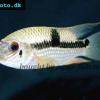 Acara
Acara  Yellow
Yellow  Patrick's
Patrick's  Blue
Blue  Green
Green 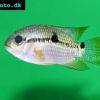 Acara
Acara  White
White  Compressed
Compressed 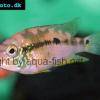 Pastel
Pastel  Midas
Midas  Red
Red  Bluemouth
Bluemouth  False
False 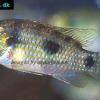 African
African  Agassiz's
Agassiz's  Banded
Banded 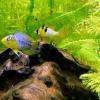 Yellow
Yellow  Cockatoo
Cockatoo  Blue
Blue  Blackstripe
Blackstripe  Highfin
Highfin  Redstripe
Redstripe  Threadfinned
Threadfinned  Macmaster’s
Macmaster’s 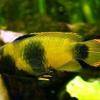 Panda
Panda  Norbert’s
Norbert’s 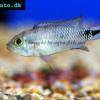 Blue
Blue  Thin-line
Thin-line  Three-striped
Three-striped  Viejita
Viejita 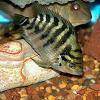 Flier
Flier  Archocentrus
Archocentrus  Convict
Convict  Seven
Seven  Spiny
Spiny  Oscar
Oscar  Sunshine
Sunshine  Chitande
Chitande  Firebird
Firebird  Midnight
Midnight  Lake
Lake  Sunshine
Sunshine  Aulonocara
Aulonocara  Nyasa
Nyasa 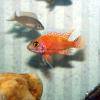 Ruby
Ruby  Grants
Grants  Aulonocranus
Aulonocranus  Chameleon
Chameleon  Benitochromis
Benitochromis  Orinoco
Orinoco 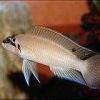 Brichard’s
Brichard’s  Guenther’s
Guenther’s  Southern
Southern  Cichla
Cichla 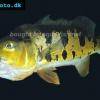 Peacock
Peacock  Chiseltooth
Chiseltooth  Bolivian
Bolivian  Red
Red  Many-pointed
Many-pointed  Jack
Jack  Red
Red  Three
Three 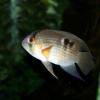 Keyhole
Keyhole  Azureus
Azureus  Red
Red  Jackson’s
Jackson’s  Crenicichla
Crenicichla  Honduran
Honduran  Blue-eye
Blue-eye  Afra
Afra 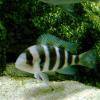 Frontosa
Frontosa  Slender
Slender  Malawi
Malawi  Chequerboard
Chequerboard  Checkerboard
Checkerboard  Malawi
Malawi  Ectodus
Ectodus  Tanganyika
Tanganyika  Canara
Canara  Green
Green  Rostratus
Rostratus  Pearl
Pearl 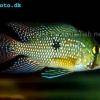 Geophagus
Geophagus  Yellowhump
Yellowhump  Suriname
Suriname  Redhump
Redhump  Red
Red  Dority’s
Dority’s  Argentine
Argentine 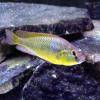 Burton’s
Burton’s  Victoria
Victoria 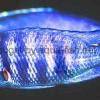 Haplochromis
Haplochromis  Jewel
Jewel  Banded
Banded 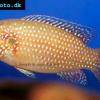 Lifalili
Lifalili  Lowland
Lowland  Texas
Texas  Pantano
Pantano  Severum
Severum  Banded
Banded 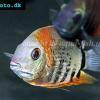 Severum
Severum  Rainbow
Rainbow  Parrot
Parrot  Chocolate
Chocolate  Brown
Brown  Marlieri
Marlieri  Golden
Golden  Striped
Striped  Masked
Masked 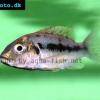 Konye
Konye  Blue
Blue  Trewavas
Trewavas  Electric
Electric  Dwarf
Dwarf  Redbreast
Redbreast  Lamprologus
Lamprologus  Gold
Gold 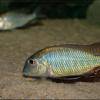 Greenface
Greenface 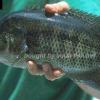 Mayan
Mayan  Aurora
Aurora  Blue
Blue  William’s
William’s 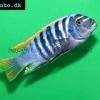 Zebra
Zebra  Malawi
Malawi  Blue
Blue 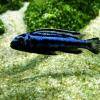 Blue
Blue  Mbuna
Mbuna  Parallel
Parallel  Purple
Purple  Flag
Flag  Bolivian
Bolivian  Ram
Ram  Basket
Basket 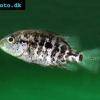 Haitian
Haitian  Zebra
Zebra  Striped
Striped  Neolamprologus
Neolamprologus  Brevis
Brevis  Fairy
Fairy 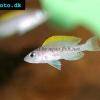 Neolamprologus
Neolamprologus  Cylindricus
Cylindricus  Hecq’s
Hecq’s  Neolamprologus
Neolamprologus  Lemon
Lemon  Mustax
Mustax  Daffodil
Daffodil  Six-bar
Six-bar  Five-bar
Five-bar  Marbled
Marbled 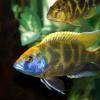 Giraffe
Giraffe  Blue
Blue  Sulphurhead
Sulphurhead  Wolf
Wolf  Jaguar
Jaguar  Blue
Blue  Marakeli
Marakeli  Madagascar
Madagascar  Pinstripe
Pinstripe  Pelmatochromis
Pelmatochromis  Kribensis
Kribensis 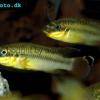 Striped
Striped  Red
Red  Deepwater
Deepwater  Fenestratus
Fenestratus  Nichols’
Nichols’  Southern
Southern  Bumble
Bumble  Demason’s
Demason’s  Slender
Slender  Red
Red  Mbuna
Mbuna  Malawi
Malawi  Kenyi
Kenyi  Powder
Powder  Altum
Altum  Angelfish
Angelfish  Angelfish
Angelfish 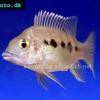 East
East  Juba
Juba  Earth
Earth 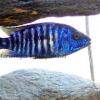 Electric
Electric  Azure
Azure 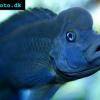 Lionhead
Lionhead  Discus
Discus  Blue
Blue  Red
Red  Zebra
Zebra  Brichard’s
Brichard’s  Blue
Blue  Firemouth
Firemouth  Zebra
Zebra  Yellow
Yellow  Blue
Blue  Dwarf
Dwarf  Blunthead
Blunthead 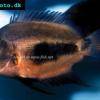 The
The  White
White  Twoband
Twoband  Fenestratus
Fenestratus  Window
Window  Tailbar
Tailbar  Black
Black  Redhead
Redhead 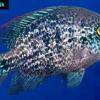 Oaxaca
Oaxaca  Xenotilapia
Xenotilapia